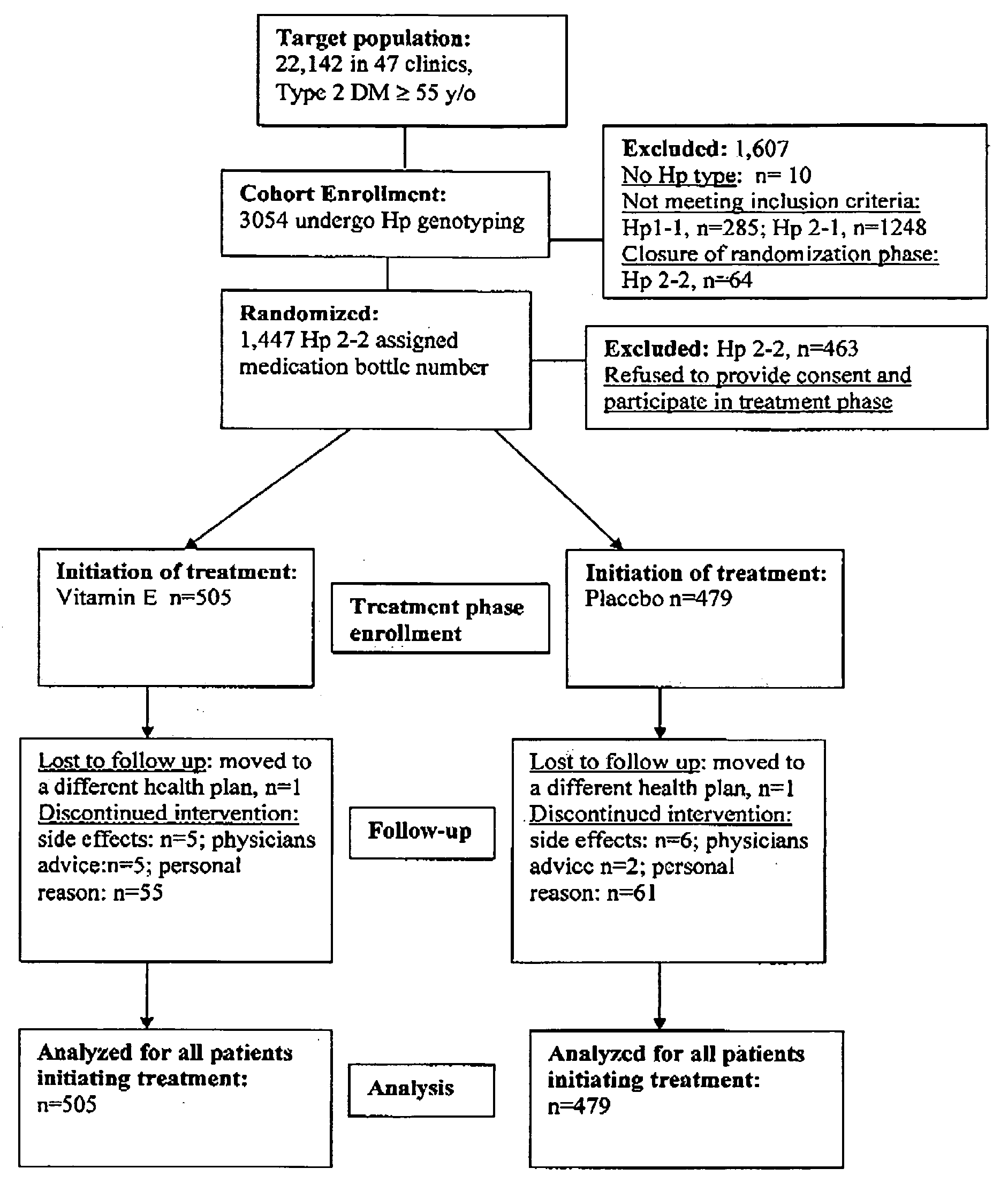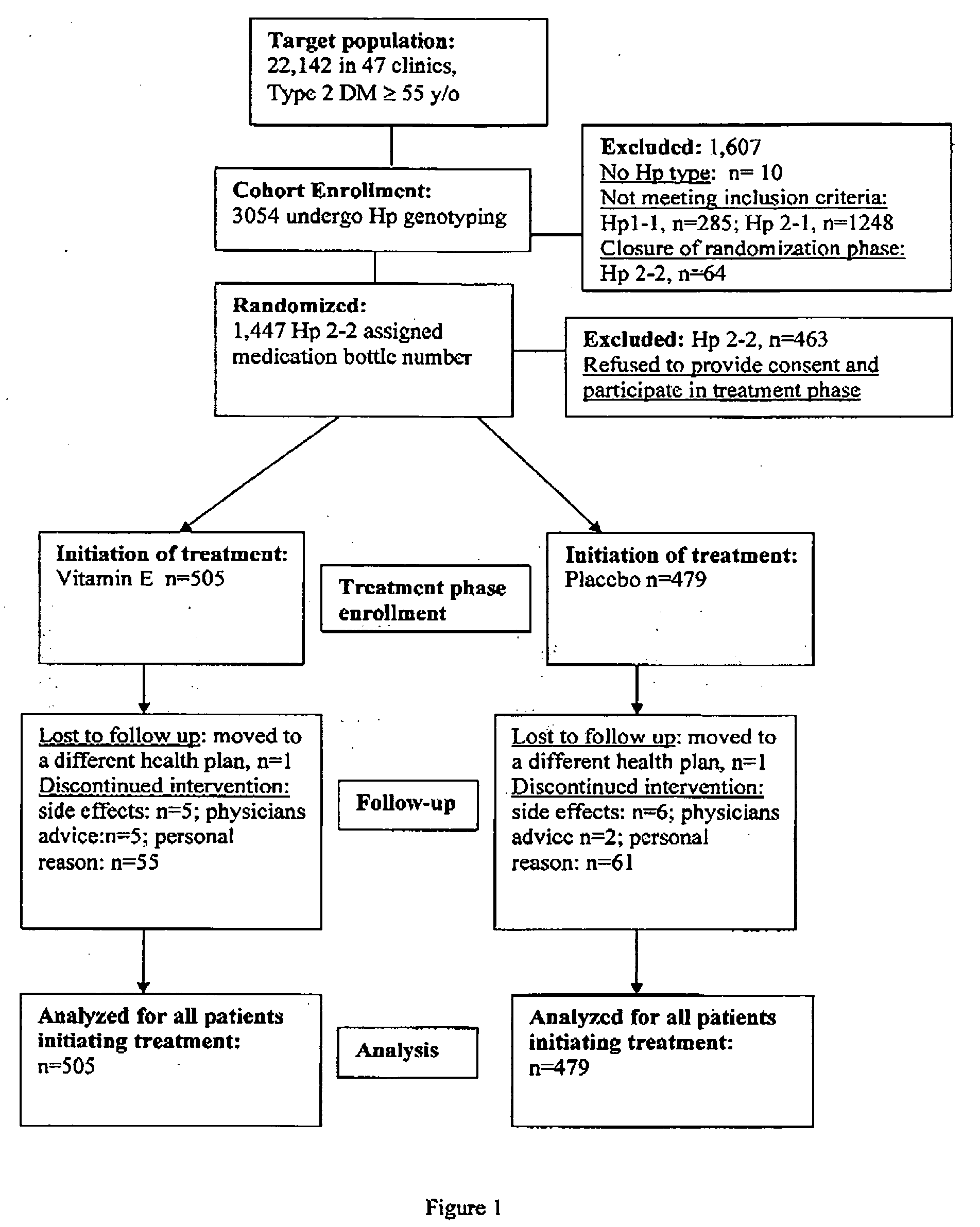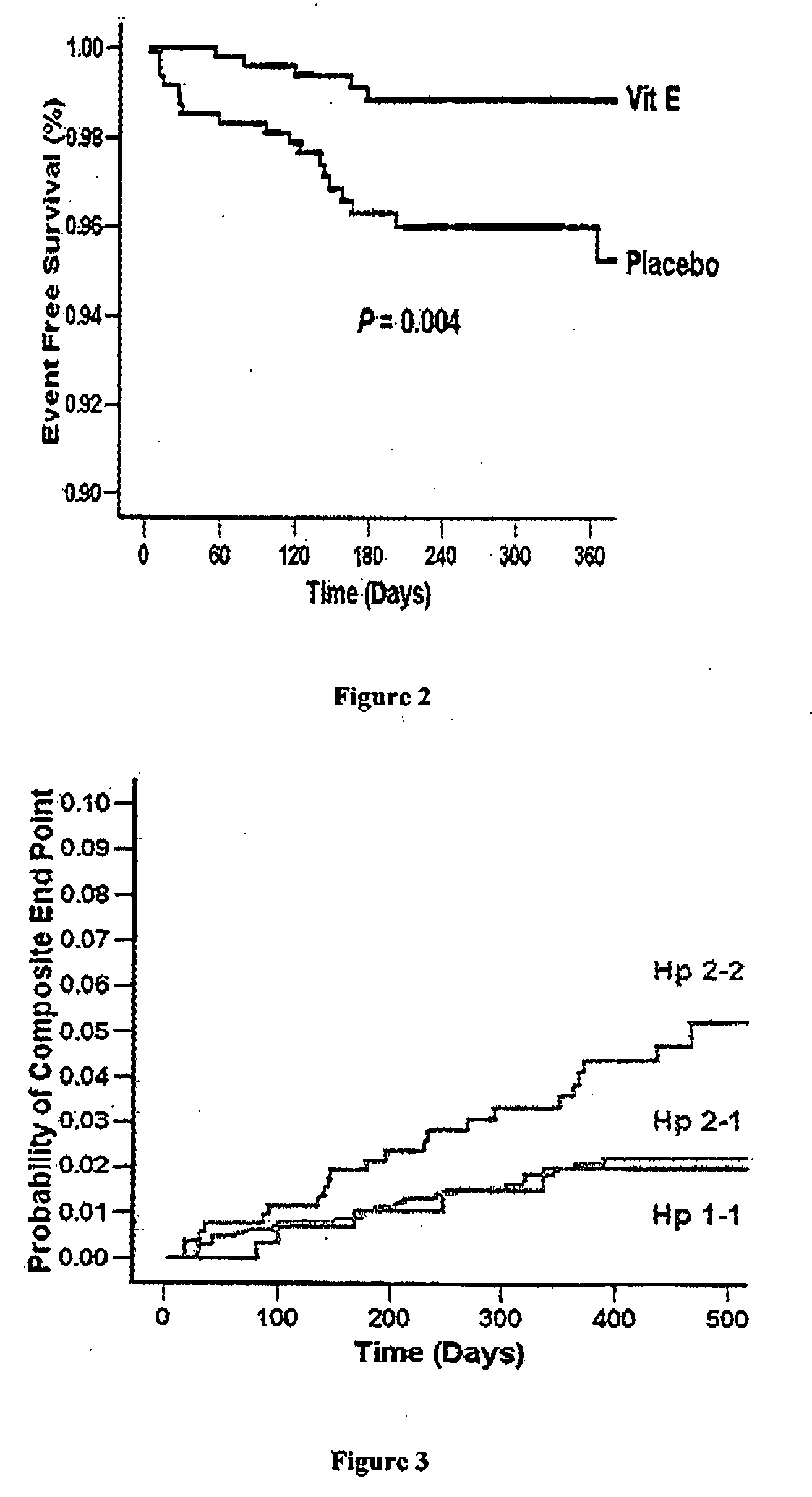Method of predicting a benefit of antioxidant therapy for prevention or treatment of vasclar disease in hyperglycemic individuals
a technology of antioxidant therapy and vasclar disease, which is applied in the field of predicting the benefit of antioxidant therapy for preventing or treating vasclar disease in hyperglycemic individuals, can solve the problems of cvd, the most frequent, severe and costly complication of cardiovascular disease, and the dramatic increase of oxidative stress and oxidative tissue damage in mice lacking the hp gen
- Summary
- Abstract
- Description
- Claims
- Application Information
AI Technical Summary
Benefits of technology
Problems solved by technology
Method used
Image
Examples
example 1
Haptoglobin Phenotype is Predictive of Risk of CVD in Diabetic Patients
[0234]The clinical characteristics of the case control cohort according to CVD risk factors and DM characteristics is shown in Table 1.
TABLE 1CVD Risk Factors by Case-Control StatusControlsCasesCVD RiskMeanSTDMeanSTDAge59.168.0160.098.08LDL Cholesterol112.130.44123.040.47MedianMinMaxMedianMinMaxDM duration6.000.0041.00Systolic BP124.081.00210.0131.088.00205.0BMI29.7617.7148.0729.8419.5972.36HbAlc4.004.0013.107.204.0015.50Fasting Glucose118.577.00365.0148.057.00354.0Insulin15.992.20144.718.451.50314.5n%n%Female Gender10249.5110249.51Diabetes9345.1514670.89Current Smoker13666.014370.69Family hx DM13163.514570.34Family hx CVD11957.7714871.84CenterOK7435.927435.92SD7335.447335.44AZ5928.645928.64
[0235]Cases and controls were matched for age, gender and geographic area. These data are consistent with previous finding in this population that diabetes, LDL cholesterol, and hypertension are all independent predictors of C...
example 2
Haptoglobin Phenotype is Predictive of Benefit from Antioxidant Therapy in Diabetic Patients
[0240]Patient characteristics of HOPE samples undergoing haptoglobin phenotyping: Haptoglobin phenotype was obtained on 3176 patients (1078 diabetics) from the original HOPE cohort for whom plasma was originally archived. These patients represented a randomly selected consecutive series of patients from the entire HOPE cohort. The clinical characteristics of the HOPE cohort according to CVD risk factors and treatment regimen is shown in Table 4 below.
TABLE 4Patient characteristics in the HOPE StudyHp 1-1Hp2-1Hp2-2(N = 487)(N = 1454)(N = 1226Demographic dataAge (SD) yrs65.8(6.5)65.4(6.4)65.3(6.7)Female n (%)105(21.6)309(21.3)290(23.7)Clinical charac-teristicsHypertension n (%)220(45.2)577(39.7)499(40.7)Diabetes (DM) n (%)177(36.3)502(34.5)399(32.5)Hypercholesterol-324(66.5)967(66.5)841(68.6)emia n (%)Current Smoking n66(13.6)194(13.3)175(14.3)(%)BMI (SD) (kg / m2)28.0(4.4)27.9(4.3)27.6(4.2)Drugs...
example 3
[0248]Materials and Methods. Study location. The study protocol was approved by the Independent Ethics Committee (IEC) of the Carmel Medical Center in Clalit Health Services (CHS) and the Israeli Ministry of Health. The study took place within 47 primary health care clinics in the Haifa and Western Galilee district of CHS. Routine care and follow up of all DM patients in these clinics is provided by the patient's family primary care physician and a designated DM nurse.
[0249]Eligibility Patients were eligible for inclusion in the study if they had Type II DM and were 55 years of age or older. 22,142 individuals were identified meeting these requirements in the 47 health clinics described above. Study exclusion criterion were (1) uncontrolled hypertension; (2) myocardial infarction or stroke within 1 month prior to enrollment; (3) unwillingness to stop antioxidant supplements; (4) known allergy to vitamin E.
[0250]Potentially eligible patients were invited by their primary care physici...
PUM
| Property | Measurement | Unit |
|---|---|---|
| Antioxidant | aaaaa | aaaaa |
Abstract
Description
Claims
Application Information
 Login to View More
Login to View More - R&D
- Intellectual Property
- Life Sciences
- Materials
- Tech Scout
- Unparalleled Data Quality
- Higher Quality Content
- 60% Fewer Hallucinations
Browse by: Latest US Patents, China's latest patents, Technical Efficacy Thesaurus, Application Domain, Technology Topic, Popular Technical Reports.
© 2025 PatSnap. All rights reserved.Legal|Privacy policy|Modern Slavery Act Transparency Statement|Sitemap|About US| Contact US: help@patsnap.com



